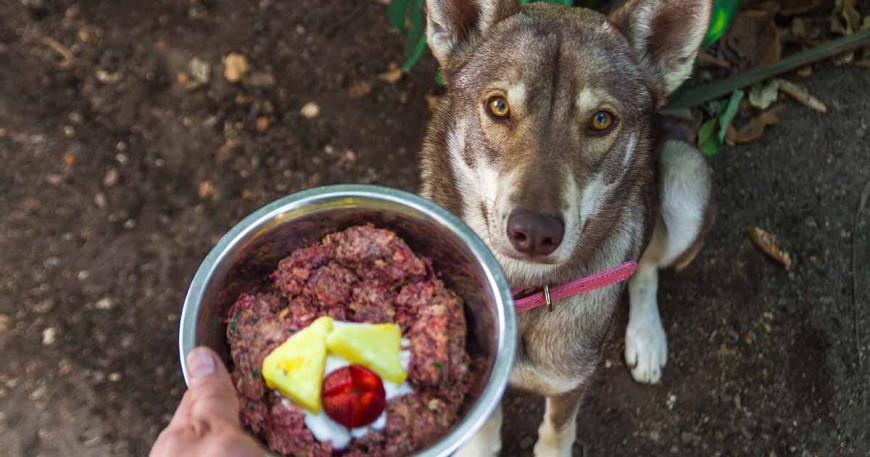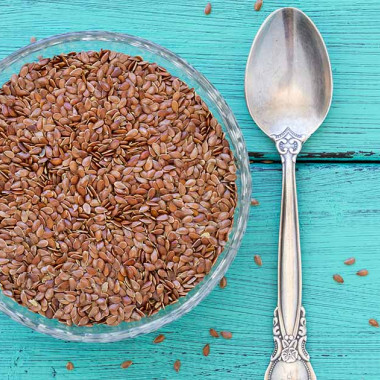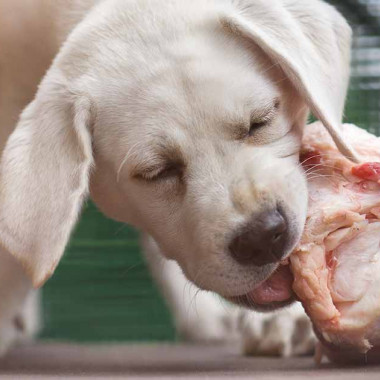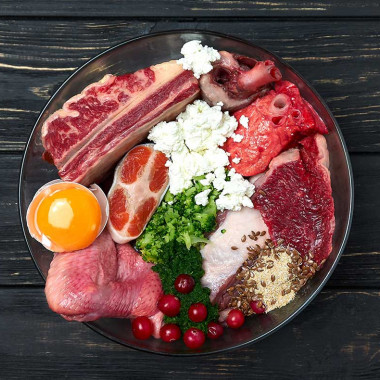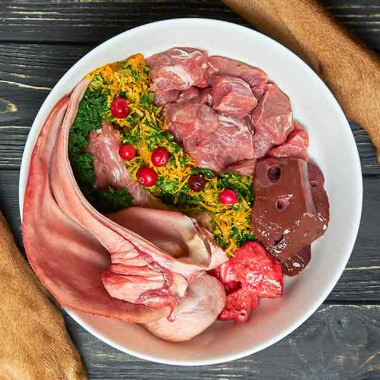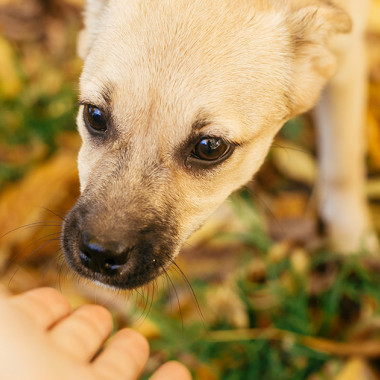The BARF diet is the most natural, easily digestible, and tastiest form of food for dogs. Feeding with BARF is different from feeding with kibble. It is important to follow your dog's needs, provide a varied diet, and approximately maintain the ratio of the feeding portion.
How to Start with BARF?
To begin, it is best to calculate the feeding portion according to the tables. After a few weeks, you will see the first results on your dog, and if needed, you can adjust the diet. If your dog starts to gain too much weight, reduce the portion. If it seems like your dog needs to gain some weight, increase the portion, or add pasta or fattier types of meat. The ratio of meat, bones, and supplements should be approximately 60% - 20% - 20%. However, this can vary slightly for some dogs. You don’t have to strictly follow the tables if you see that something doesn’t suit your dog. The BARF diet is relatively flexible and can be tailored to each dog according to age, health condition, size, and breed. You can find more information on feeding based on these attributes of your dog in these articles:
If you need advice on starting with BARF, do not hesitate to contact us through a message on our Facebook page.
Where is the Best Place to Buy Meat for Dogs?
Always buy meat for your dog from a trusted source. Meat bought from a butcher shop or grocery store is of human-grade quality, so there’s nothing to worry about. However, the price might not be very favorable. The best option is to buy meat from an online store specializing in pet food, where you can find high-quality meat at a very reasonable price. Every supplier should have a designated veterinary number and ensure the transport of frozen or chilled meat under appropriate conditions, meaning through freezer or refrigerated vehicles specifically designed for this purpose. If you buy or receive meat of unknown origin, it is better to serve it cooked or not at all to your dog. However, if you are dealing with verified sources, there is no need to be afraid of raw meat. Nevertheless, it is recommended to follow certain guidelines.
What Guidelines Should Be Followed for Freezing and Thawing Meat?
All meat you plan to give to your dog should be frozen for at least 48 hours. Deep freezing destroys most parasites that may be present in the meat. Dogs have strong stomach acids that can handle the larvae of most parasites. Therefore, giving them a piece of unfrozen meat from a trusted source once in a while won’t hurt them.
Proper thawing of meat is also important. Meat should not be thawed at room temperature, especially not during warmer months, as it can spoil quickly. The best way is to thaw meat in the refrigerator, or if you need to thaw it quickly, in the microwave. For handling raw meat, it’s good to have the right kitchen tools. You can read more about this in the article below:
What to Watch Out for When Feeding with BARF?
Besides knowing what is recommended, it is important to know what is not recommended and what to watch out for.
It is very important to know which foods are unsuitable for dogs. These include commonly known foods like chocolate, avocado, and onions. For example, cooked or baked bones are dangerous for dogs. They are hard to digest, much harder than raw bones, and when chewed, they break into sharp pieces, which could harm the dog's digestive tract. It is safe to give dogs only raw bones. Also, too many bones can cause constipation in dogs. You can read more about unsuitable foods in the article below:
Transition from Kibble to BARF
A well-balanced feeding portion should be designed so that it includes not only bones but also muscle meat, organs, and vegetables. During the transition from kibble to BARF, or with an incorrectly chosen combination of raw materials, the dog may experience diarrhea. The best remedy for this is overcooked rice with cooked carrots and lean meat. You can learn more about the transition from kibble to BARF and how to prevent diarrhea in dogs in the articles below:
The feeding portion should be varied, and over a certain period, for example, a month, different types of meat, vegetables, and fruits, as well as supplements, should be rotated. Insufficient variety in the diet may result in the dog not receiving all the necessary vitamins and minerals in the correct proportion. The most important thing is to observe your dog and ensure that they are thriving. In case of doubts, it is better to consult experts or occasionally have a blood test done at the vet. However, if you follow the basic rules of feeding with raw food, your dog will be healthy, happy, and vital.
